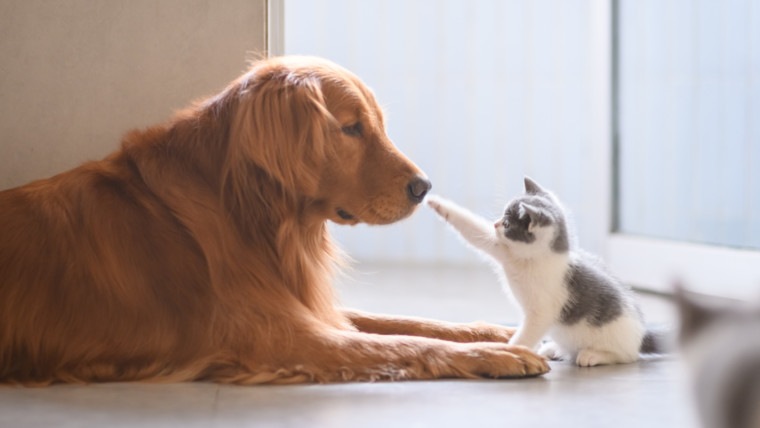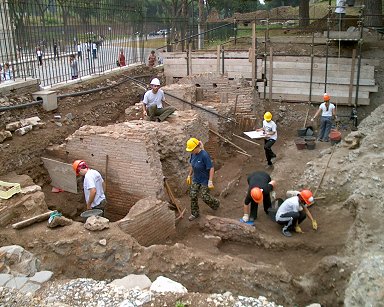Planning a road trip with your friends or family members can feel like an exciting adventure… or a risky undertaking. This helpful road-tripping guide will help you prepare for whatever the road has in store.
The most critical part of planning your road trip is ensuring your vehicle is up for the task. Have your vehicle fully inspected by a professional a few days prior to your departure date. This will allow you time for any repairs that may be necessary or to secure alternative transportation if your vehicle is not in proper condition. A full inspection will check all fluid levels, belt and hose connections, tire pressure and tread, wheel alignment, engine condition, and ensure your turn signals, lights, wipers and horn are working properly. Be sure the inspection also checks the tire pressure and tread of your spare tire. If you typically keep a doughnut tire as your spare, consider replacing it with a full-size spare for your trip. Lastly, give your car a good interior cleaning before packing it up.

Even with a full inspection, surprises may occur while you’re on the road, so prepare for them with a vehicle emergency kit. Your vehicle’s emergency kit should include a first aid kit, fire extinguisher, reflectors/flares, jumper cables, tire iron, flashlight with extra batteries, and plenty of water and nonperishable food. Consider keeping an extra gallon or two of drinking water (in addition to the bottled water or other beverages you pack for the trip) in your trunk in case of emergency. Other items that may be helpful to have in your emergency kit include an extra gallon of motor oil, rope, duct tape, pocket knife, rain poncho, atlas, and a battery back-up or portable charger for your cell phone. If you don’t already know how to change a tire, now is a great time to learn. Ask your mechanic to walk you through it during your pre-trip inspection.
Be sure to take note of the weather expected on your route and add items to your vehicle and emergency kit accordingly. If you’ll be driving through cold and snowy weather this winter consider using windshield washer fluid designed for freezing temperatures to melt ice from your windshield as you drive. Add cold weather safety items such as extra blankets, gloves, hats, hand warmers, snow boots, an ice scraper, and snow shovel to your emergency kit. Kitty litter or sand is also useful for helping your tires get traction if you’re stuck in the snow.

A vehicle inspection and emergency kit cover the safety of your car, but it’s equally important to keep personal safety a priority. Before leaving home, have a general idea of the route you’ll take and pre-plan for fuel stops and overnight stays. Plan fuel fill-ups frequently enough that your vehicle never goes below one-quarter of a tank to account for unanticipated delays such as bad weather or closed roads. Pre-book lodging to ensure you’ll be staying in a safe location and rooms are available. In addition:
- Designate a friend or family member not on your trip to keep track of your trek. Text them the name and location of where you’re staying each night, and check in with them periodically regarding your driving location throughout the day.
- Have extra sets of car keys made and ensure each adult passenger has their own set. This can help prevent lock-outs and provides back-ups if anyone loses their keys.
- Keep anything of value in your trunk or securely covered in the back of your vehicle.
- Review safety rules with your children. Keep constant supervision during stops, escort them on bathroom breaks, and remind them to be wary of strangers.
Pack your vehicle as lightly as possible to save on fuel costs, and leave room for any souvenirs you may discover along the way. Consider using lightweight duffle bags or backpacks for family members versus heavier suitcases that take up more space. If you have overnight stops along your route have a separate overnight bag packed containing only the items you’ll need for that stay – pajamas, toiletries, clothes for the next day – to eliminate needing to unpack the entire car at each stop. If you’re traveling with young children it’s helpful to group their outfits and pack each entire outfit in a gallon-sized zip-top plastic bag to keep it conveniently together and organized.

In addition to your emergency kit, be sure to pack other essential items you may need for your road trip. These include:
- An atlas/roadmaps in case your GPS is inaccurate, loses its signal, or loses power.
- Blankets and pillows for passengers to sleep in the car as comfortably as possible.
- Hand wipes to wash hands before and after in-car meals and snacks, and to clean up any messes.
- Things to keep the kids entertained including toys, portable travel games, sticker books, and electronic devices such as handheld video games, tablets, and a portable DVD player.
- Cash to pay for road tolls.
- Plastic bags to be used for garbage.
- If you’re traveling with young children consider bringing a portable potty chair. It’ll come in handy for little bladders that can’t wait until the next rest stop.
- Extra batteries and car chargers to keep tech gadgets powered up at all times.
- Food, beverages, napkins, and utensils.
A well-stocked cooler can be a lifesaver on a road trip, so be sure to stock it with plenty of healthy food, snacks, and beverages. Some great options include individually-wrapped sandwiches and tortilla wraps, hard-boiled eggs, string cheese, trail mix, apple slices, pretzels, cherry tomatoes, baby carrots or celery sticks served with mini containers of peanut butter, crackers, grapes, granola bars, and popcorn portioned into individual baggies. Gingersnap cookies are a great road trip snack option. Not only are they delicious, but ginger also helps combat carsickness. For drinks, stick to beverages that are clear and won’t stain if spilled. Keep some bottles of water ready to drink, and freeze the rest before leaving on your trip to help keep your cooler cold.

Be sure to dress comfortably for your road trip. You’ll be sitting in a confined space for the majority of your day, so comfort is key. Choose stretchy clothes in breathable fabrics and avoid anything tight or heavy, like jeans. Dress in layers so you can adjust for temperature changes, and wear comfortable shoes. It’s not uncommon for feet to swell slightly after sitting for a long period of time, so be sure to choose shoes you can loosen or easily remove if needed.
Keeping your car gassed up is a major road trip expense, but these fuel-saving driving tips can help you stay within your budget:
- Choose the most fuel-efficient vehicle that will meet your space needs. Depending on your distance it may be more cost-effective to rent a hybrid vehicle for your road-trip, saving you in fuel costs and wear and tear on your car.
- The faster you drive the more wind resistance your car experiences (and the demand on your engine is significantly greater). Stick to the speed limit to maximize your fuel efficiency (and prolong the life of your engine).
- Use your vehicle’s cruise control while driving through flat terrain, but turn it off when driving though hilly areas or mountains. Instead, lower your speed while driving up hills and mountains (and coast on the way down) to save on both fuel and stress on your engine.
- Avoid driving through cities during rush hours (7-9am and 4-6pm) to prevent gas-guzzling idling while stuff in traffic.
It may be tempting to get to your destination as soon as possible, but don’t forget to build in breaks. Plan to stop about every three hours so everyone can stretch their legs, take bathroom breaks, and kids can run around. Bring a soccer ball (or other outdoor activity) along and take 15 minutes to play a game with the kids in a grassy area. Not in a hurry? Break up your trip with stops along the way at places like museums, historical sites and overlooks, or even “The World’s Biggest…” or “World’s Only…” attractions.
Lastly, don’t forget to document your road trip! Bring a notebook along and write about where you’ve been, your favorite sites, any unexpected experiences, or the funny things you hear your kids talking about in the backseat. Be sure to take lots of pictures and share them with friends and family as you go, or make a memory album when you get home. You can even give your trip its own hashtag for friends to follow along on social media! #happyroadtripping
Need some tunes for the trip? Check out this great playlist!
Dusty Rogers is the blogger, mother, maker, decorator and drinker of the wine at All Things G&D - a lifestyle blog where home décor, DIY and organization, healthy meals and kid-friendly snacks, party planning and entertaining all happily play together in the sandbox. Dusty lives in Madison, WI with her husband Greg and their daughter Kate, and she spends her days balancing high maintenance tendencies with a desire to keep things simple.

















